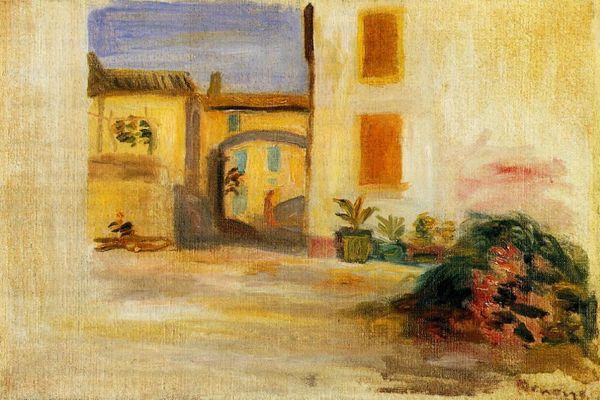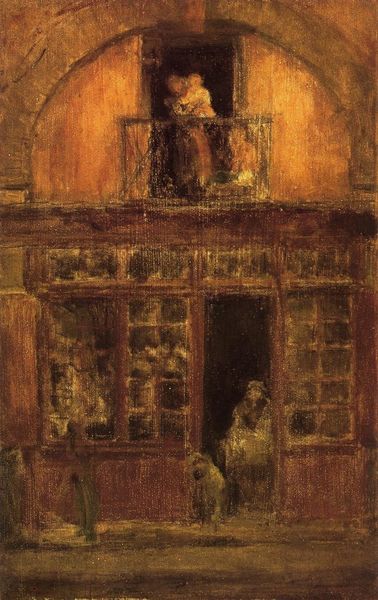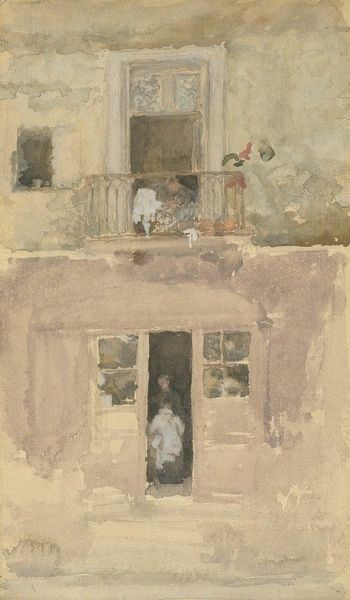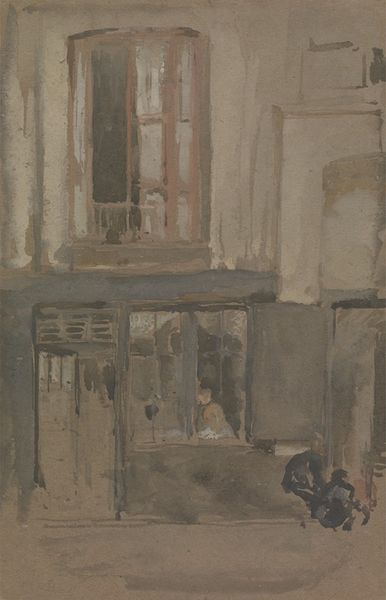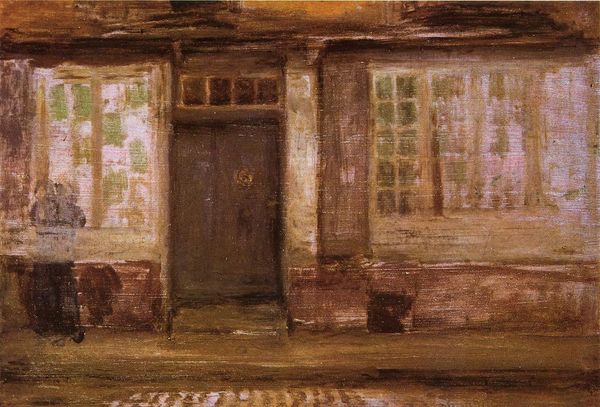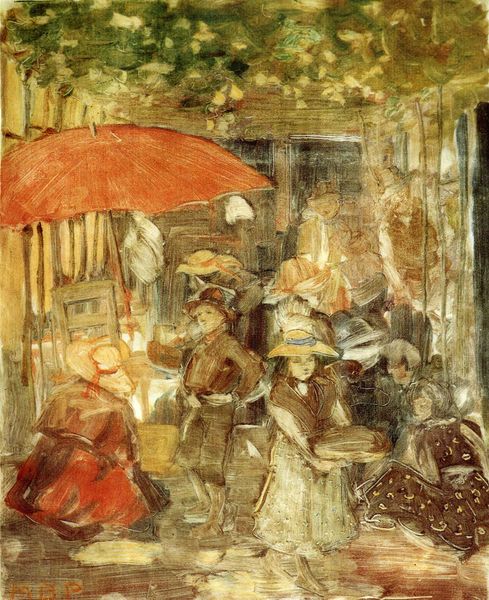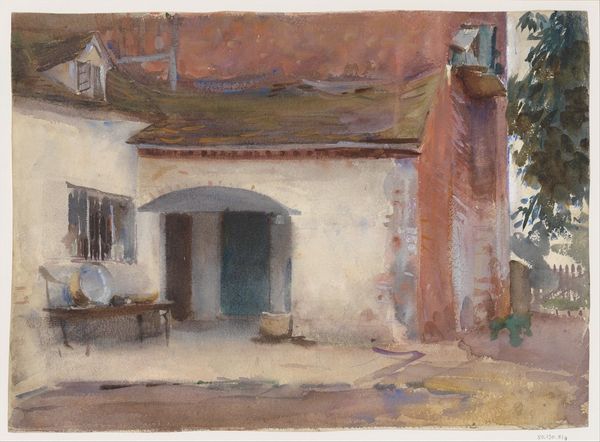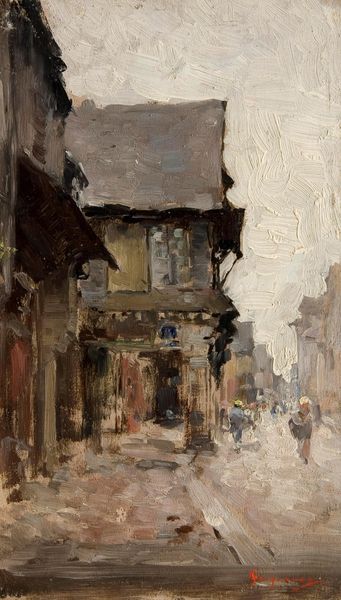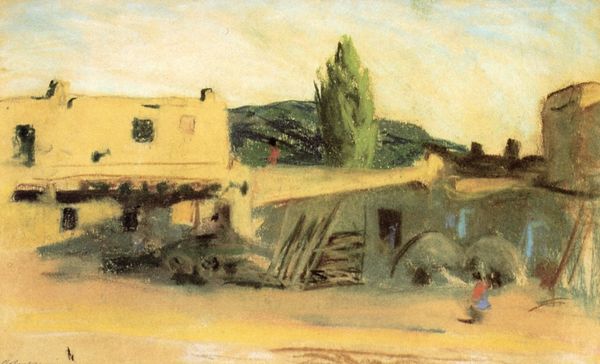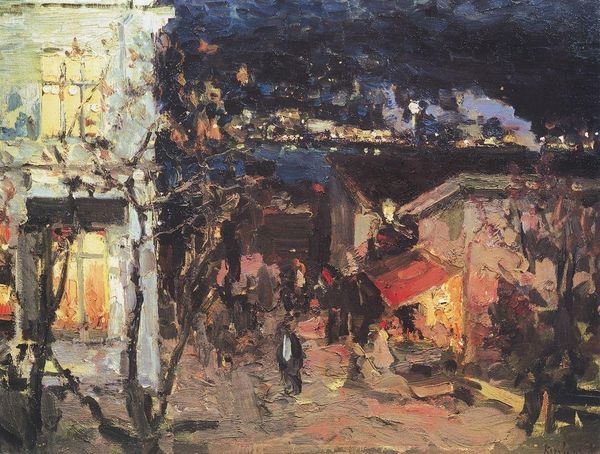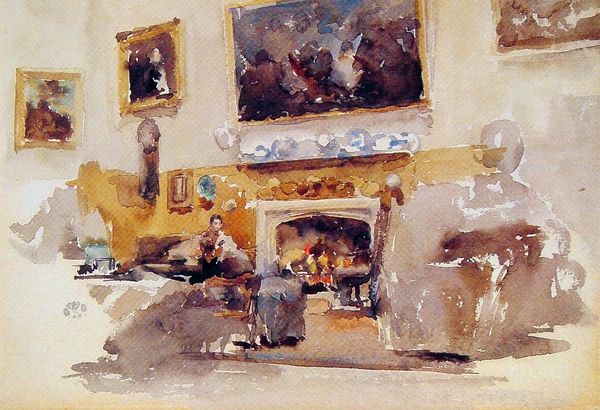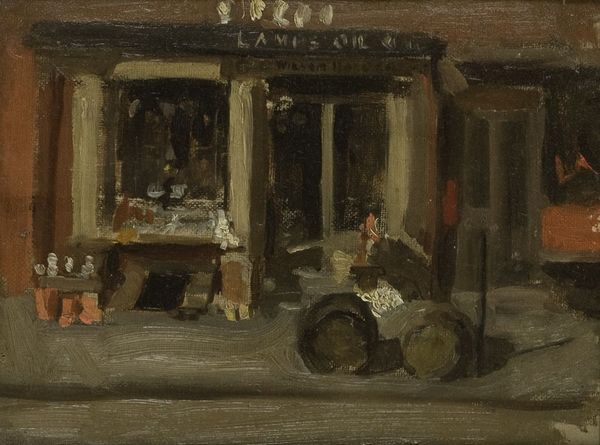
Copyright: Public domain
Editor: This is Renoir’s “Rue Caulaincourt,” painted in 1905. It feels so… unstructured compared to his earlier work, almost dreamlike. What do you see in this piece? Curator: I see a layering of cultural memory. Look at the way Renoir uses light—not just to depict the scene, but to evoke a feeling. It’s a street, yes, but also a stage for observing societal rituals. Do you notice how the figures blend into the architecture? Editor: I do, they’re like… ghosts, almost. It’s interesting you mention societal rituals. Curator: Indeed. Renoir's late Impressionism captures more than the surface. He presents a vision of Parisian life where class distinctions are blurred, and personal narratives play out against an ever-changing urban backdrop. This specific imagery reminds us of continuous transformation and echoes with cultural shifts. How do you see those represented here? Editor: Maybe in how the building seems so solid and permanent, but the people seem transient? They're there one minute, gone the next. Curator: Precisely! It's an ongoing dance between permanence and change, individuality and community. We see in that contrast a profound commentary on the fleeting nature of existence itself. Editor: That makes me see it differently now, more as a meditation on time. Curator: Exactly. It seems Renoir offers an insight to how humans continuously engage with the passage of time through shared symbols.
Comments
No comments
Be the first to comment and join the conversation on the ultimate creative platform.
